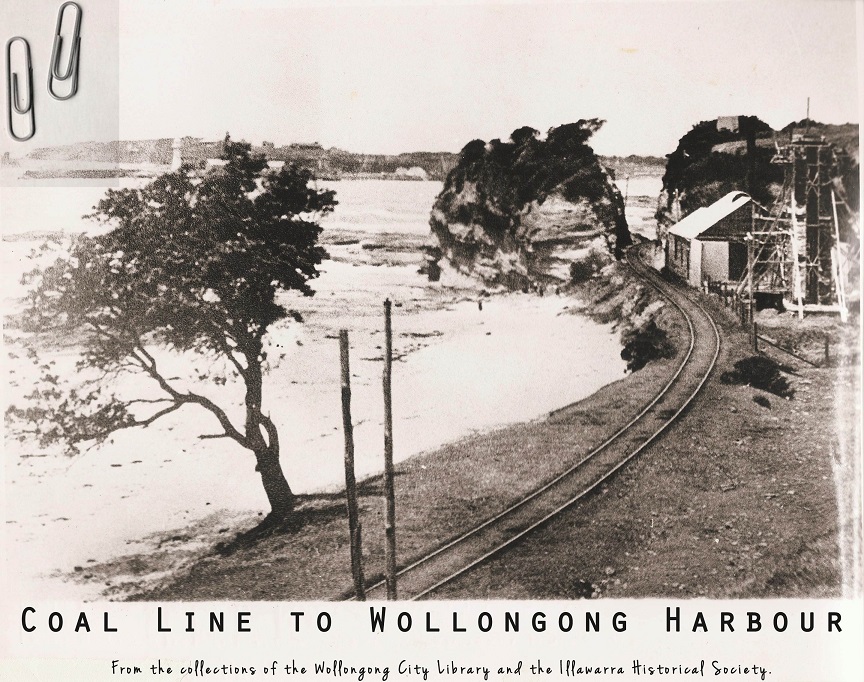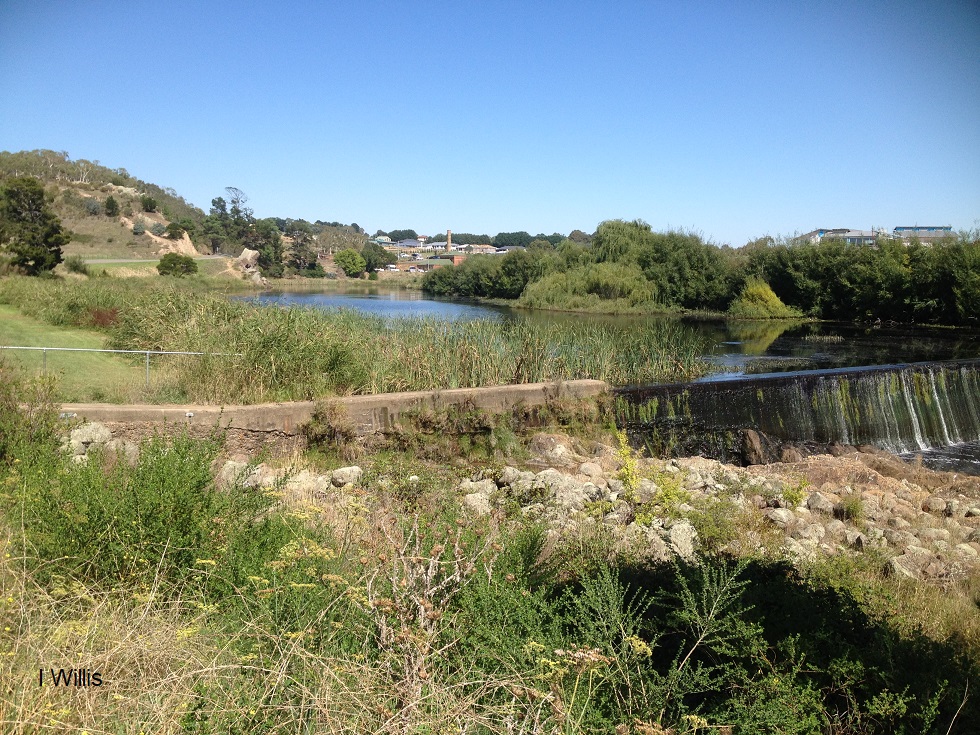A Camden connection
In the mid-19th century, a prominent member of the country gentry from Camden district was directly connected to the first railway in New South Wales. The identity was TC Barker from Maryland at Bringelly and one of the founding directors of the Sydney Railway Company.
The Sydney Railway Company
According to Alan Birch in the Journal of the Royal Australian Historical Society, the Sydney Railway Company was incorporated in 1849 with capital of £100,000 to build a railway line between Sydney and Parramatta and promised an optimistic return on capital of 8% (Birch 1957).
Camden connections to the railway
One of the Sydney Railway Company directors was Thomas Barker, who established Maryland at Bringelly in the 1850s. He developed the farm Maryland as a Sydney gentleman’s country retreat and started building his hilltop homestead in 1854. Barker was a skilled engineer and millwright and built a large windmill at Darlinghurst in 1826. He had extensive landholdings in the Yass District, on the Goulburn Plains and along the Murrumbidgee, and our local area in the Cowpastures. A successful Sydney businessman and philanthropist, he was one of the earliest promoters of railways in New South Wales. He paid for the survey between Sydney and Goulburn and several other colonial gentlemen.
Another company director was Charles Cowper, a New South Wales politician who owned Wivenhoe. Cowper was the railway manager but quit when the NSW colonial government appointed the attorney-general as company president. The company ran into financial issues with cost overruns as the price of land rose during the gold rush. The government extended a loan to the company £150,000 and appointed three additional directors. Cowper returned to politics and convinced the government to take over the floundering project, which it did in 1854. The company had the honour of being the first railway company nationalised in the British Empire. Cost overruns meant that the 1849 estimate of £2,348 a mile eventually blew out to over £40,000 a mile. (Birch 1957)
A forgotten anniversary of Sydney’s Central Railway Station
26 September 1855
On 26 September 1855, the first train left the Sydney terminus, a ‘tin shed’, with great pomp and ceremony and thus began the great railways of New South Wales. The ‘tin shed’ railway terminus was replaced by two further railway station buildings, one opened in 1874 and the current imposing Victorian edifice of brick and sandstone in 1906.
The current 1906 Central Railway Station is the third station on the site. It is a grand Victorian structure in the tradition of British railway stations demonstrating to the world the importance of rail travel in New South Wales at the beginning of the 20th century.
A marvellous day goes down in history
The colonial newspaper, the Sydney Morning Herald, reported on the 1855 railway opening in glowing terms as a marvel. The Herald reporter maintained that it demonstrated how the colony of New South Wales could match the rest of the world with a magnificent achievement only a decade after convict transportation had been abolished. The newspaper report started this way:
The event yesterday was the triumph, not only of science over natural difficulties, but of the spirit of enlightenment and civilisation over prejudice and worldly mindedness. The great agent of civilization, the best and most effective servant progress, has been retained by the antipodean colonies of Australia within the same quarter century in which he became the liveried civilized vassal Europe. We have established a railway in this colony – we have achieved the great distinction which ranks us with those country who live and progress under impulses which modern science has seemed to indicate will work out the destinies of our race. (SMH, 27 September 1855)
The importance of the event to New South Wales cannot be underestimated only 32 years after the world’s first public railway. The Stockton and Darlington Railway was the first public railway to use steam locomotives and take passengers. The line opened in 1823 and eventually closed in 1863.

Tin Shed
The original site of the 1855 ‘tin shed’ station was in ‘Cleveland Paddock’ located between Cleveland and Devonshire Streets and known as Redfern Station as it was near Redfern. The present Redfern station was officially called Eveleigh, yet the name Redfern Station for the Sydney Terminal stuck for both the first and second ‘Sydney’ stations. It was indeed a ‘tin shed’ – a corrugated iron shed with a 30m long single wooden platform and was the terminus for the line for passengers from Parramatta. (Upton 2013)
According to Sydney Trains, the 1855 terminus was south of the present Central Railway Station, on the south side of the Devonshire Street tunnel. The oldest surviving structure from this period on the New South Wales rail system is the ‘overbridge’ running under Railway Square to Darling Harbour. Last used as a railway in 1984, it is now known as the Goods Line and is part of Sydney’s urban walkways and an extension of the existing Devonshire Street pedestrian tunnel.
21-gun salute
At the official opening, the Governor’s Vice-Regal train left the Sydney terminus at 11.20 am to a 21-gun salute and great cheers from the crowd. Over 3,500 passengers travelled on the train service between Sydney and Parramatta Junction at Granville on the first day, with intermediate stations at Newtown, Ashfield, Burwood and Homebush. Trains left the Sydney terminal at 9, 11, 12, 1, 4.45, and 5 and departed from Parramatta Junction at 10 am and 2, 3, 4 and 5.30 in the afternoon. (Birch 1957)
The journey of 14 miles took around 50 minutes, and first-class tickets cost 4/-, Second 3/-, and Third 2/-.
According to State Archives and Records, in the first full year of operation, the rail service was used by over 350,000 passengers.
Toing and froing on rail gauge
The rail gauge used in the project determined the future of railways in New South Wales for the next 150 years. The Sydney Railway Company initially hired Irish-born engineer FW Shields who favoured 5 ft 6 in. Still, in 1850 he persuaded the colonial government to change to the Irish national gauge 5 ft 3 ins, which the British Government agreed to in 1851. Shields quit after a dispute in 1850, and Scottish engineer J Wallace was appointed. Wallace preferred the British Standard Gauge for 4 ft 8½ ins, and in 1853 orders were forwarded to Great Britain for rolling stock, locomotives and rails on the British Standard Gauge. The rail gauge has remained the same ever since.
Locomotive No 1

One of the locomotives ordered from Great Britain in 1853 was Locomotive No 1, which is on display at the Powerhouse Museum in Ultimo. According to the Powerhouse Museum, the locomotive was built in.
England by Robert Stephenson & Co., Newcastle-on-Tyne, designed by J. E. McConnell of the London and North-Western Railway Company, and is a very rare survivor of a McConnell goods express locomotive of the early 1850s.
maas.museum/event/locomotive-no-1/#:~:text=Plan Your Experience-,Locomotive No.,Sydney to Parramatta in 1863.
The locomotive arrived with four others in January 1855 and worked the line for 22 years. It was withdrawn from service in 1877, hauling passengers and freight between Sydney, Campbelltown, Penrith and Richmond.
The locomotive is considered extremely rare and the only example of its type worldwide.
Railway fever
New South Wales did not have the first steam railway in Australia; that honour went to the colony of Victoria. According to the National Museum of Australia, Melbourne’s first steam railway line opened on 12 September 1854. and ran between Flinders Street Station to Sandridge, now known as Port Melbourne. It was 2.5 miles (about four-kilometre) long and operated by the Melbourne and Hobson’s Bay Railway Company. A steam engine was made by Melbourne’s Robertson, Martin and Smith Engineering Works and was the first to be produced in the Southern Hemisphere. The line is still used today and is part of Melbourne’s light rail tram services.
The desire for a railway in New South Wales was not new, and promoters, including Thomas Barker, had lobbied for a railway line from Sydney to Goulburn was first proposed in 1846. (SMH, 27 September 1855)

The first sod
The first sod on the Sydney-Parramatta railway was turned on 3 July 1850 in the Cleveland Paddock by the Hon Mrs Keith Stewart in the ‘presence of his late Excellency Sir Charles Augustus FitzRoy and a large concourse of people’. (SMH, 27 September 1855) The inclement weather with continuous rain was a warning and foreboding of the project’s difficulties over the next five years.
The first section of the railway was constructed between Ashfield and Haslem’s Creek for £10,000. Works included earthworks, fencing and bridges for a single line and, interestingly, did not include the cost of the rails from the United Kingdom. Progress was slow and ran into problems with labour shortages after the discovery of gold at Bathurst in 1852. The contractor ‘abandoned the contract’ when labour costs escalated, and not even an offer by the colonial government of an increase of 30% in funding was not enough to save the project. (SMH, 27 September 1855)

References
Birch, A. (1957). “The Sydney Railway Company, 1848-1855.” Journal and Proceedings of the Royal Australian Historical Society 3: 49-92.
Upton, S. (2013) “Central Railway Station: Through the Lens.”
Updated 5 June 2023; Originally posted 12 August 2022


























































![Goulburn Auburn St 2018[2] lowres](https://camdenhistorynotes.files.wordpress.com/2018/02/goulburn-auburn-st-20182-lowres.jpg)











![Oran Park Public School 2014 [2] (OPPS)](https://camdenhistorynotes.files.wordpress.com/2018/02/oran-park-public-school-2014-2-opps.jpg)

You must be logged in to post a comment.